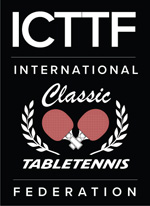Wang Liqin forehand loop
In regular and slow motion (0:46) The perfect loop? Note the smooth weight transfer and body rotation as he creates torque. He's a three time World Men's Singles Champion (2001, 2005, 2007), world #1 for 25 consecutive months (second most ever), and winner of 21 Pro Tour singles events, the most ever. And I once interviewed him (through a translator) and shook his hand. Yes, my playing hand touched his. Regrettably, I've washed it since.
Service practice reminder
The following is a public service address. Remember that serve that let you down at the last tournament? The one that was going slightly high, or slightly long, or that nobody seemed to have trouble with? Isn't it time you go out and fix that problem for next time? Get a bucket of balls and practice. Here's a ten-point plan to serving success. I've got a bunch of other articles on serving here.
USA Table Tennis Leagues
Yesterday there was an email exchange among USATT and other officials regarding the USA League Finals at the USA Nationals. Should they be an open event, where anyone can show up representing a region, or should they only allow teams representing a region with an established regional league? I'm strongly for the latter. There are established leagues in some areas (such as BATTF, LATTF, and NYTTL, representing the bay area (San Francisco region), Los Angeles, and New York (which includes teams from states as far away as Maryland). Here's my response.


 Photo by Donna Sakai
Photo by Donna Sakai




